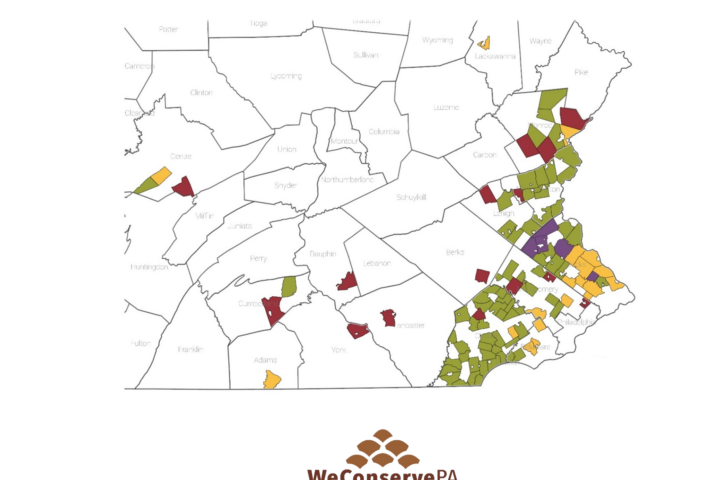The most effective tools to reduce the water pollution and flooding caused by stormwater runoff are green infrastructure, land conservation, and best management practices on farms. PALTA’s new three-page guide Working with Nature to Manage Stormwater serves as a gateway to the wealth of web resources that explore these tools.
Guides Updated
PALTA has updated and revised 10 of its guides thus far in 2019, part of the Association’s ongoing commitment to keeping ConservationTools.org fresh. Changes ranged from complete rewrites to reflect new understandings in the field to miscellaneous edits to improve readability and utility. Titles, links, and brief descriptions of the latest guides to be updated are as follows:
Municipalities use zoning regulations to limit disturbance of steep slopes in order to prevent erosion, reduce the risk of dangerous landslides, and preserve scenic hillsides.
A sign ordinance can help a municipality reduce the visual clutter of signage and end business sign wars. It also can help protect, establish, or enhance community identity.
In 2010, PALTA published an original, useful guide to sign ordinances. Fast forward a decade, and PALTA found that others have more recently developed better resources. This new guide disposes of the old material and instead connects readers to these better resources. The online edition also links readers to a multitude of examples of sign ordinances.
Community visioning is a planning tool that empowers people to express a vision for the future of their community; ideally, this vision guides land-use decisions and regulations.
Elections and 501(c)(3) Organizations
Federal tax rules prohibit section 501(c)(3) organizations from participating or intervening in a political campaign in support of or in opposition to a candidate for elected public office. However, organizations may lobby, educate voters, encourage voter registration and participation, and advocate for issues in a nonpartisan manner.


